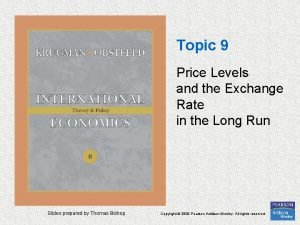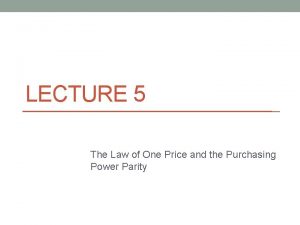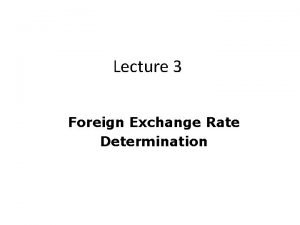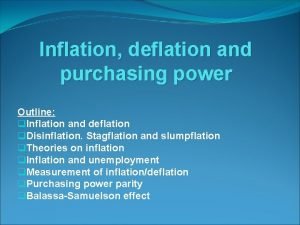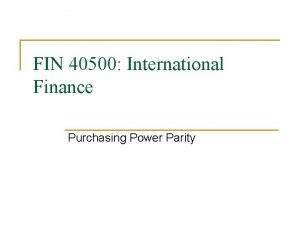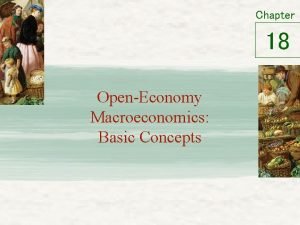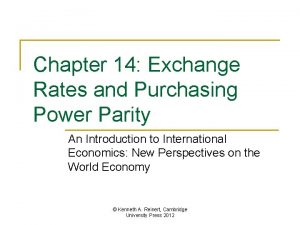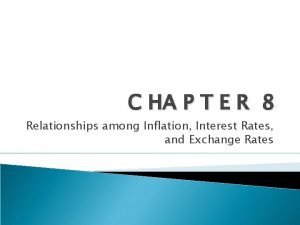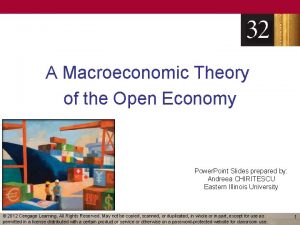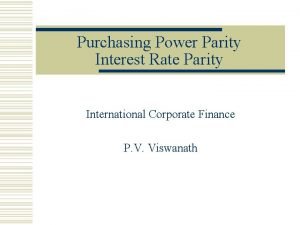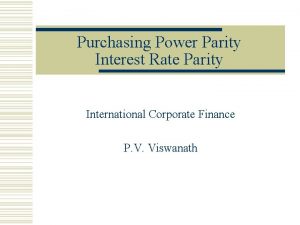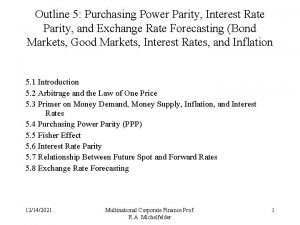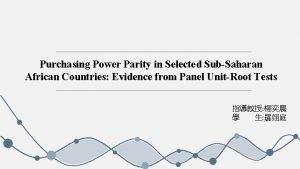Purchasing Power Parity in South East Asian Countries










- Slides: 10

Purchasing Power Parity in South East Asian Countries Economies: A Cointegration Approach* 國 Author: Ahmad Zubaidi Baharumshah、Mohamed Ariff Source: Asian Economic Journal 1997, Vol. 11 No. 2, pp. 141 -153 際 金 融 授課教授:楊奕農 學生:陳盈甄

Introduction • Reports tests on the long-run PPP relationship. The conventional method for testing PPP is to regress exchange rates on relative prices for pairs of countries and then to test the coefficient restrictions. • Employ the cointegration analysis suggested by Engle and Granger (1987) to test for the long-run relationship between exchange rates and prices. • The analysis used in this study is based on quarterly data (1974: Q 1 to 1993: Q 4) for five South East Asian countries: Malaysia, Indonesia, Thailand, the Philippines and Singapore with the US data as reference.

The rejection is -2. 93 at a significance level of 5%.

The rejection is -2. 93 at a significance level of 5%.

The rejection is -3. 29 at a significance level of 5%.

The rejection is -3. 75 at a significance level of 5%.

The rejection is -3. 75 at a significance level of 5%.


Conclusion • PPP conditions observed in the five South- east Asian countries namely Malaysia, Singapore, Thailand, the Philippines and Indonesia were not consistent with the prediction of PPP hypothesis, at least in relation to the post-1973 period. • PPP equilibria have not occurred in low-inflation economies like Malaysia, Singapore and Thailand as well as high-inflation countries like Indonesia and the Philippines.

Thank you for listening.
 Ppp exchange rate
Ppp exchange rate Absolute purchasing power parity
Absolute purchasing power parity Qqqnn
Qqqnn Law of one price and purchasing power parity
Law of one price and purchasing power parity Ppp theory of exchange rate
Ppp theory of exchange rate Slumpflation vs stagflation
Slumpflation vs stagflation How to calculate purchasing power parity
How to calculate purchasing power parity Purchasing power parity theory
Purchasing power parity theory How to calculate purchasing power parity
How to calculate purchasing power parity Fischer effect formula
Fischer effect formula How to calculate purchasing power parity
How to calculate purchasing power parity
